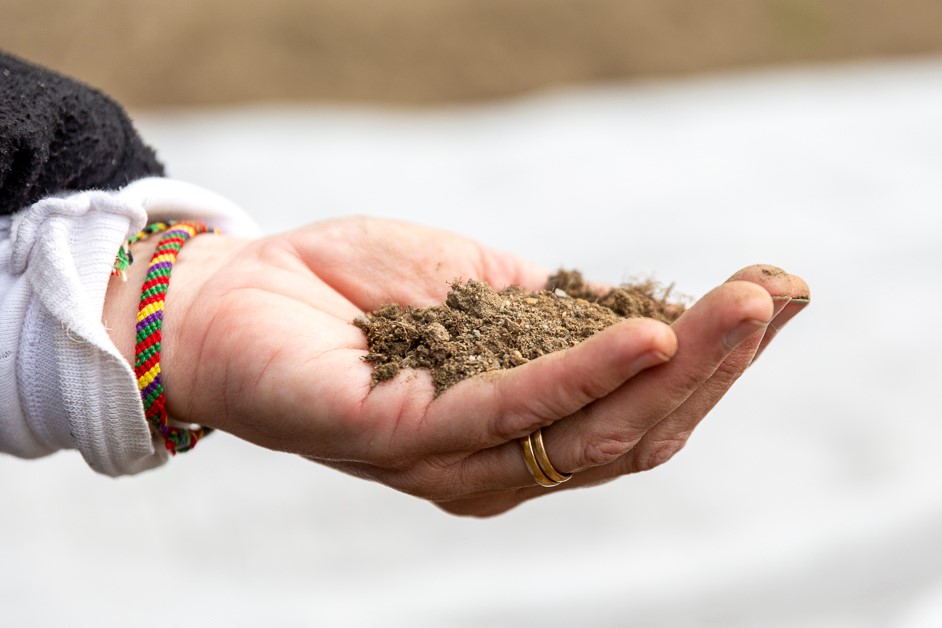Down to earth

Nina creates living soil in Tängsta
- I love flowers, notes Nina Eriksson, Tängsta resident since three years ago and now a bokashi enthusiast.
- When I lived in a villa in Östersund, there was a lot of gardening. Here I have a lot more area to grow on so now I have several different fields and pallet collars up and running plus different flower beds and small plantings on the farm.
As said, there was plenty of lands to grow on, but the sandy soil was far from optimal for the plants to thrive. The lack of good soil made her start reading about creating good growing soil.
- It was on that road that I came into contact with bokashi composting and now the soil is almost as big of an interest as the cultivation itself!


Nina comes from Hudiksvall but now lives in Tängsta with her husband, Aziz. As an old scout, his interest in nature was awakened early. When she was 19 years old, she moved to an agricultural collective in Norway and opened her eyes to cultivation.
- A few years later, I moved home to Sweden and started working at Sundvik's ecological garden out in the archipelago. There, interest grew in natural ways of farming that do not require artificial fertilisers and so on.
That interest, combined with the need for better growing soil on the farm in Tängsta, led her to bokashi, a technique for composting that has grown like an avalanche in gardening circles. The interest among enthusiasts is excellent and the topic is widely discussed in online forums and Facebook groups.
- In short, it's about creating superior living soil from food waste in a much faster time than regular composting, Nina summarises and explains that it all works thanks to EM-A, a highly concentrated mixture of natural microorganisms.


The principle is roughly the same as in the white silage balls you see in agriculture. The leftovers are stored in an airtight bucket which causes them to ferment. EM-A is added in the form of sprinkles or liquid to speed up the process.
- EM-A stands for Effective Microorganisms and consists of a dream team of bacterial cultures that together speed up the transformation of leftover food. From apple powder to soil can go as fast as three months!
- My plants are getting more robust, and the harvest is better. The garden here at home has grown with several new plantings, and I have lots of ideas. In addition, it is fun that there is a large online community around bokashi and plenty of opportunities to get tips and advice.
To keep soil production going, food scraps and other things need to be put in the bucket.
- But you can get a little manic when it comes to finding things to fill your bokashi bucket with. It's almost like I pick apple powders home with me if I see one along the way, and when I received flowers on Valentine's Day, my automatic thought was: perfect, they'll help fill the bucket!


